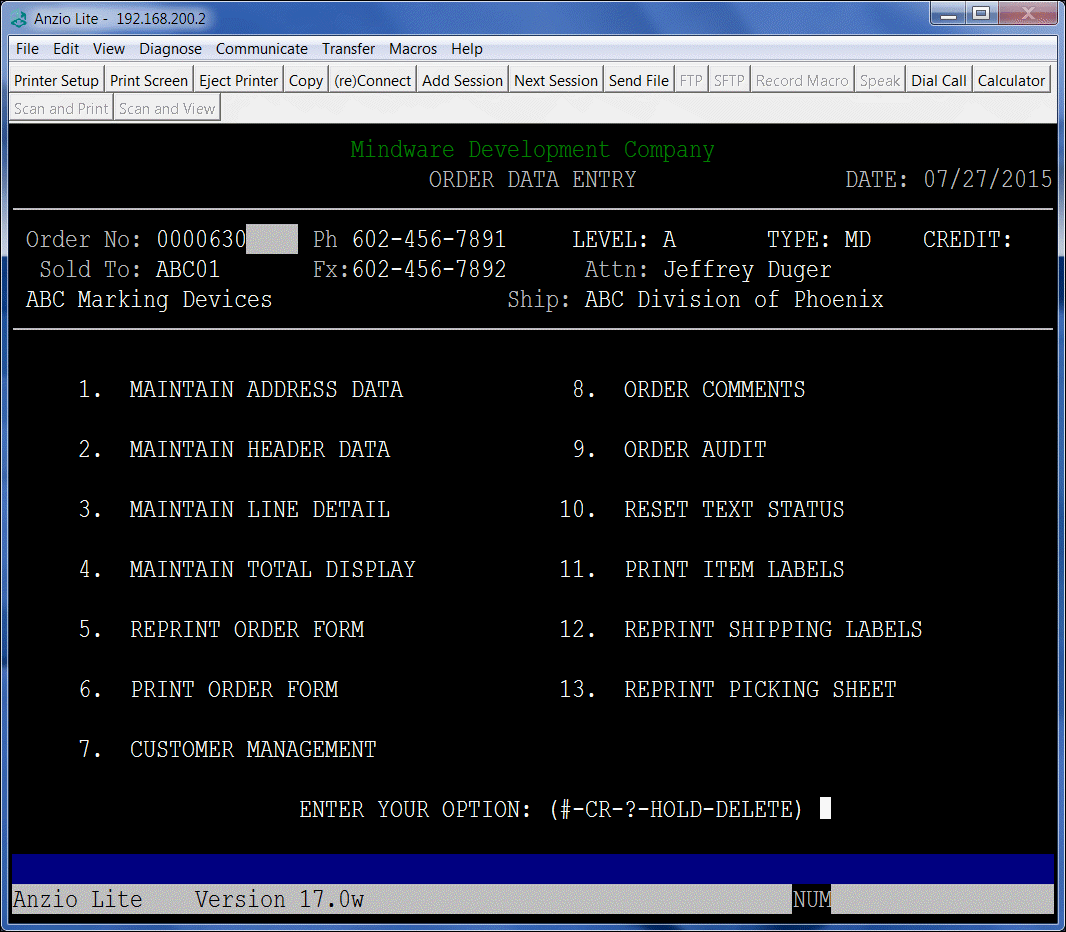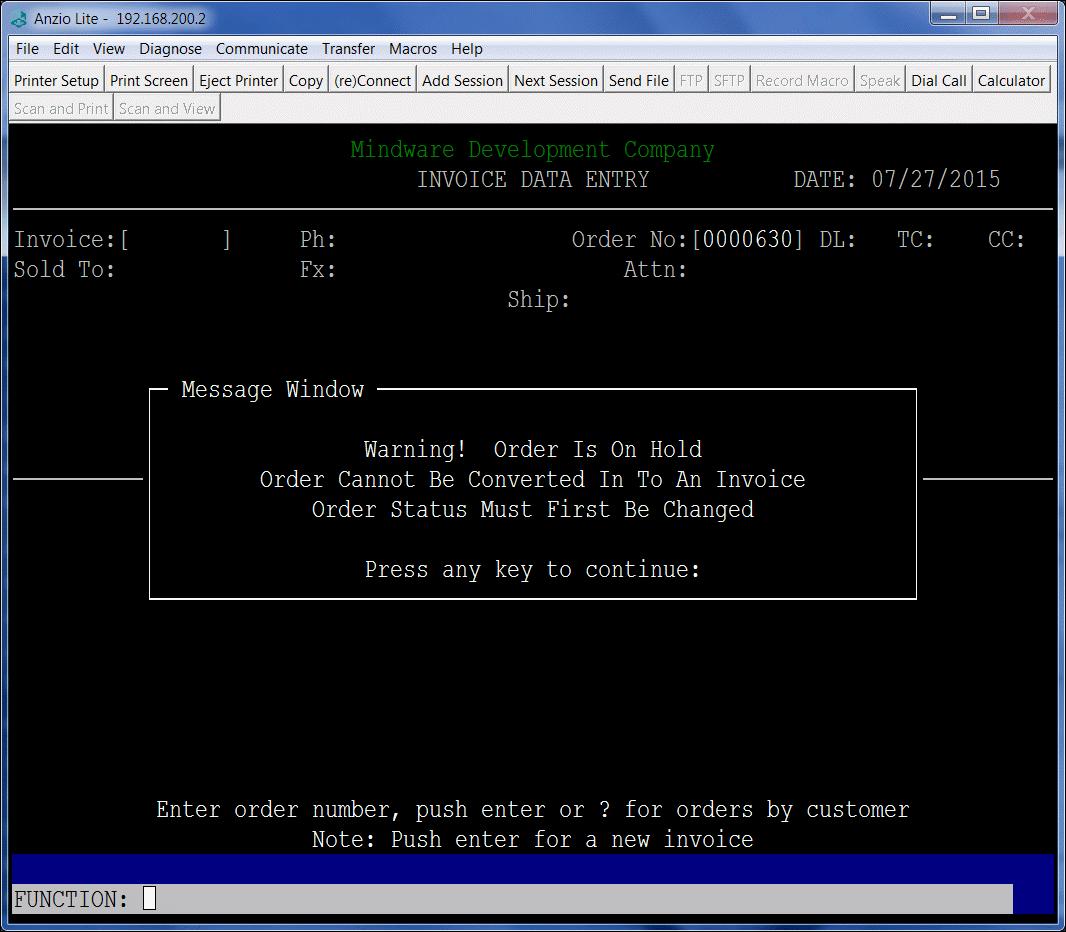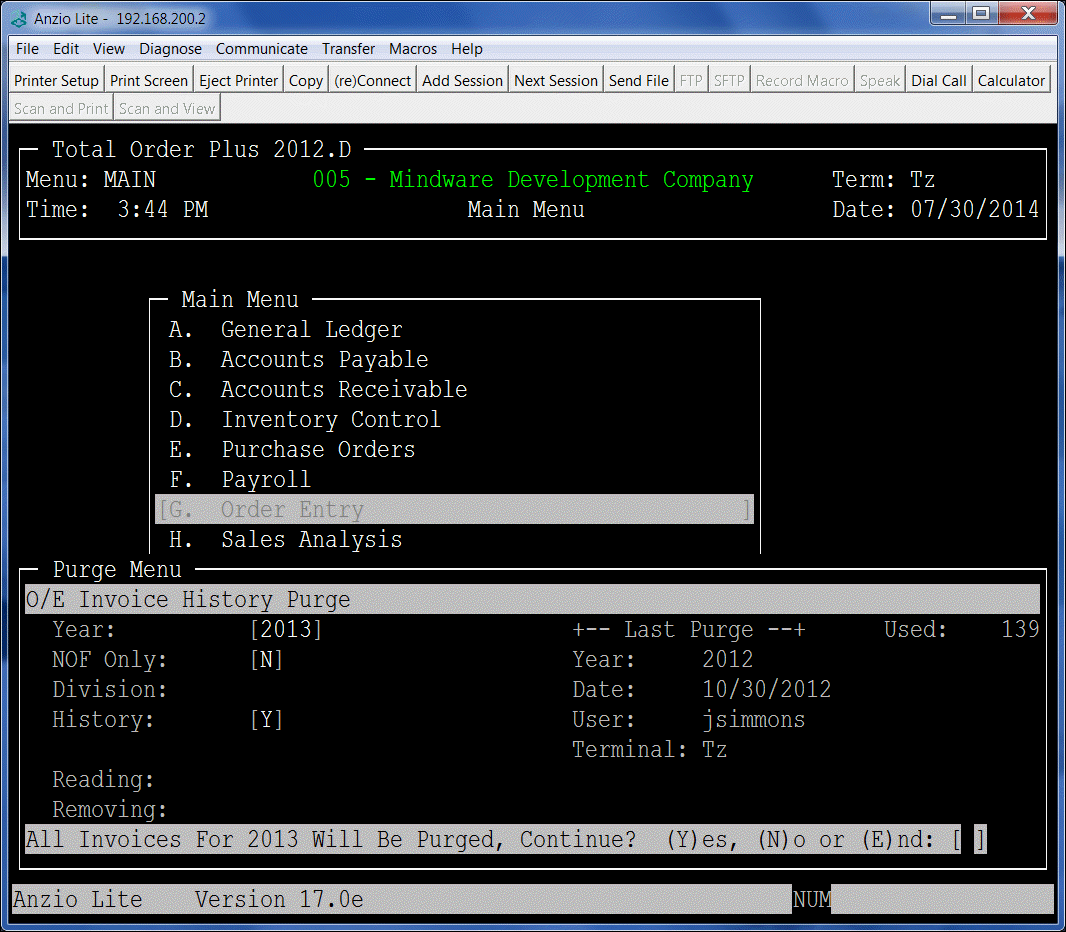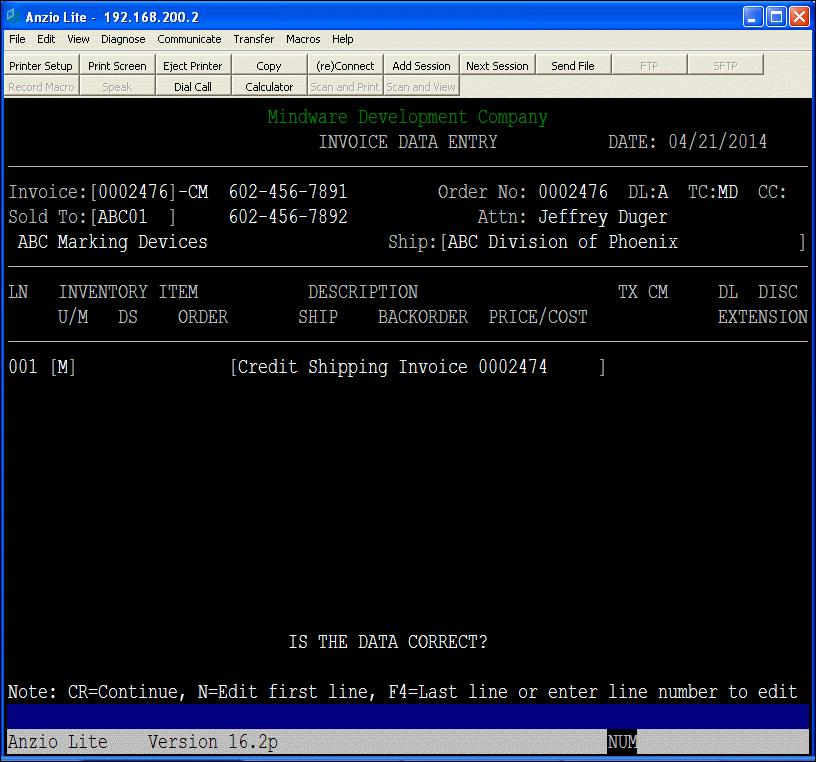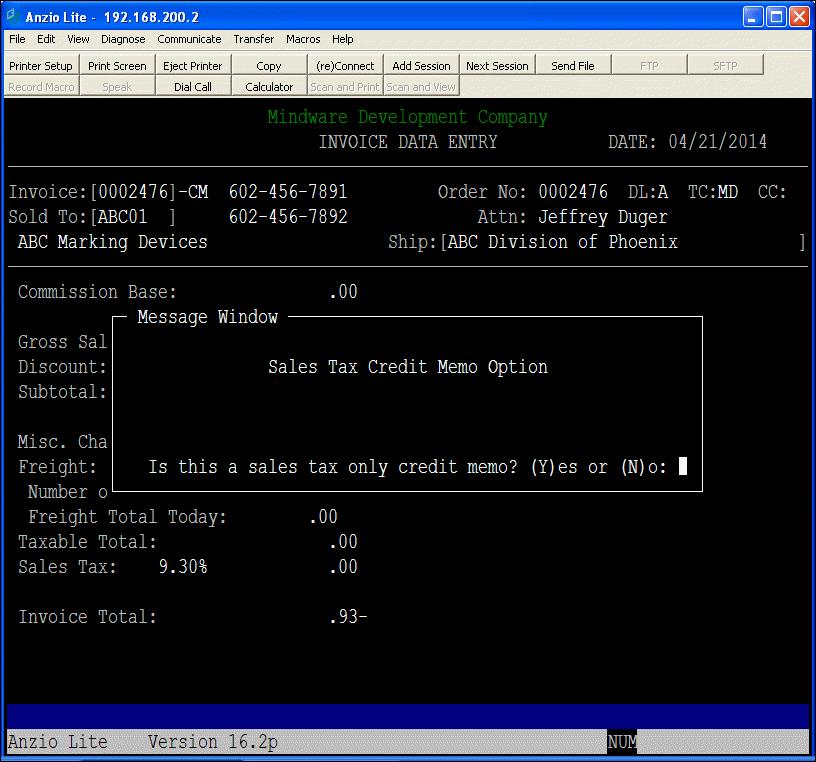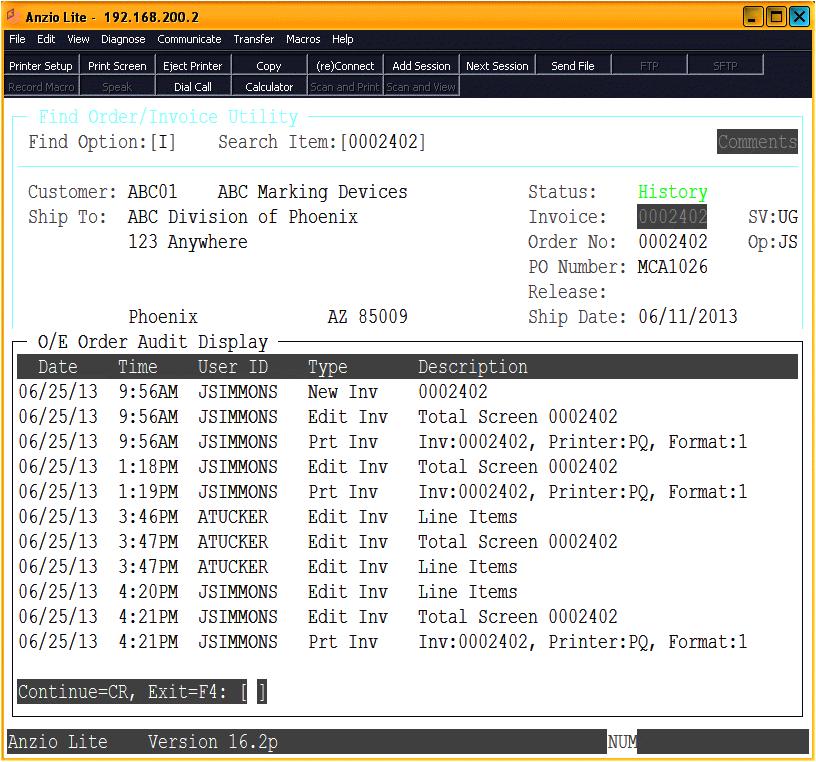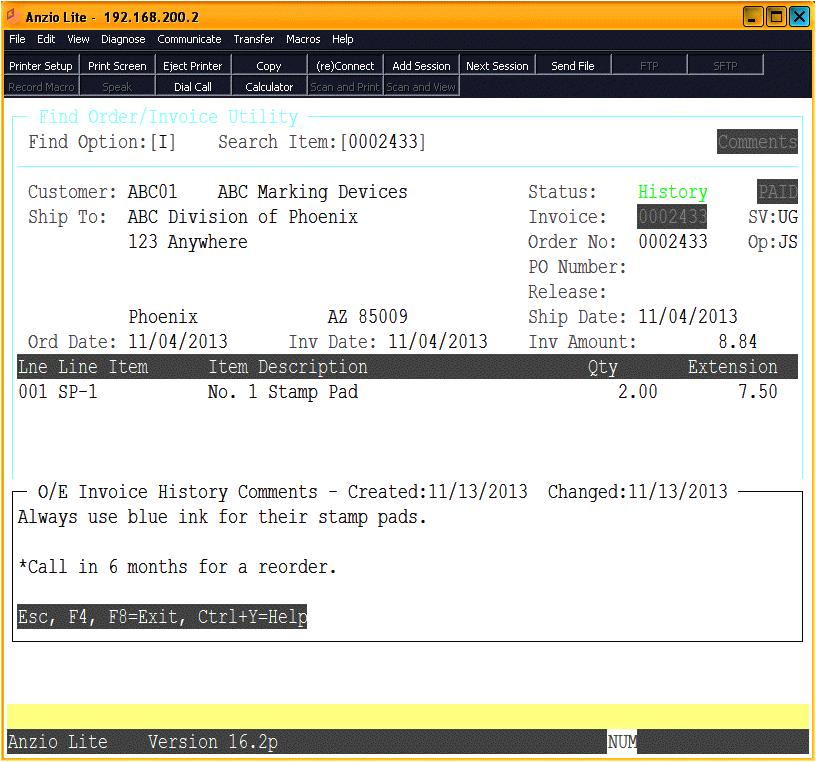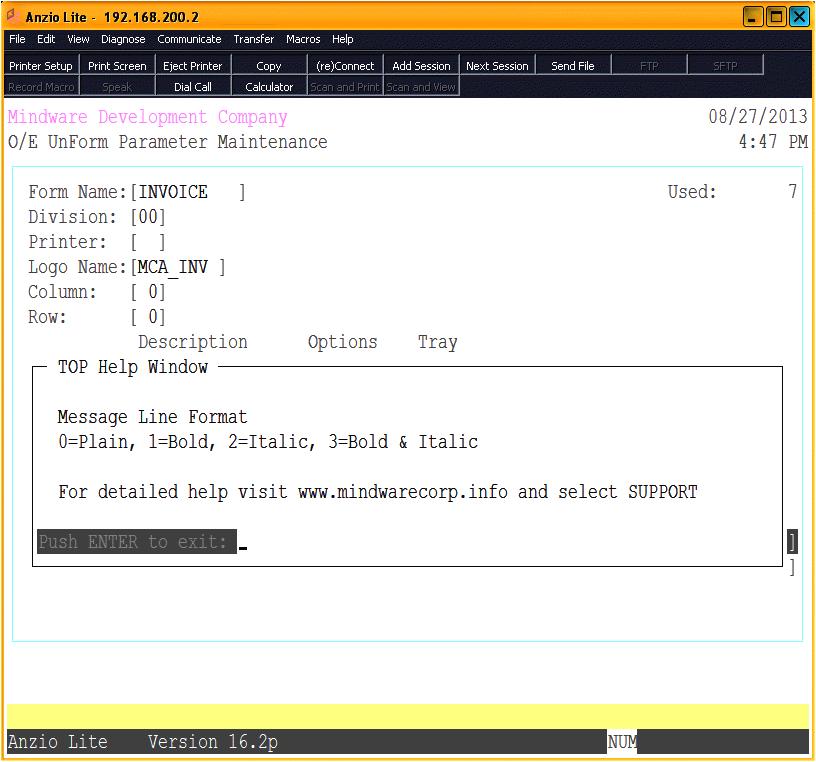Terms Code Maintenance lets you enter codes for multiple purchase terms your company may offer. The code can be a one or two alpha-numeric code,
You can enter up to a 25 characters in the terms description field. You have the option to print the message on the order and designate whether or not this terms code is COD.
The number of days until due will be the number of days from the invoice date until payment is due.
The deposit code is used in cash receipts and will print the pre-payment information on the order and invoice if the terms code used in Order and Invoice Data Entry is set up to do so..
Deposit type is 0=cash, 1=check or 2=credit card and whether you want to print on O-order, I-invoice or B-both order and invoice or N to not print on either one.
The number of days discount is the number of days from from the invoice date in which the invoice payment must be received in order to qualify for a discount. You must enter a discount rate to apply to the invoice total.
The order mask is rather or not you want to print only the last 4 digits of the credit card number on the order and the same with the credit card mask.
The discount days is the number of days to pay in order to get a discount and a discount percent to apply.
Credit Hold would apply to the number of days to hold for a customer’s payment.
The Terms Code Maintenance is located on the Order Entry Options Menu.
i

